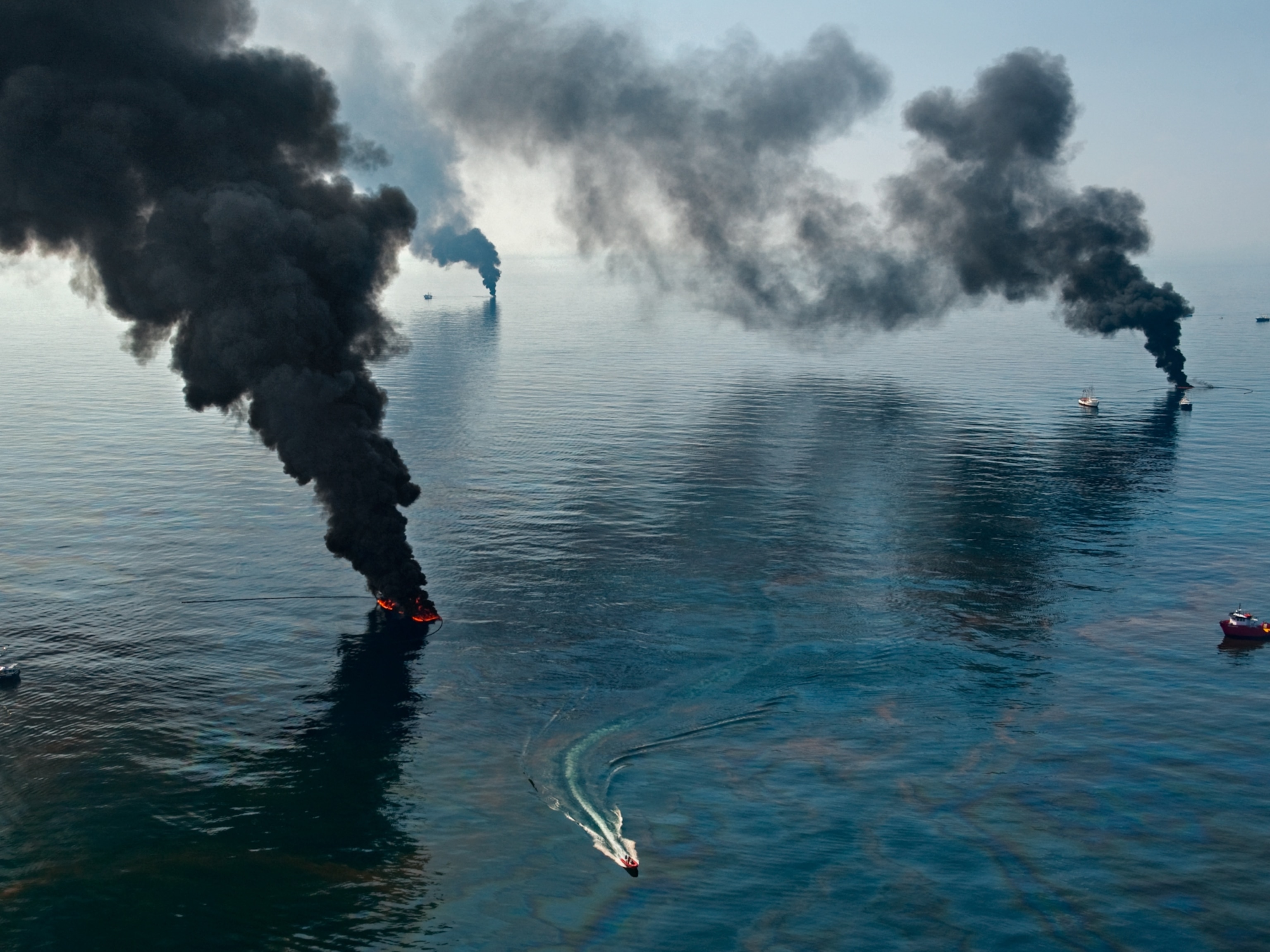
After Oil Spill, Unique Mangrove Forest Faces More Threats
A new report calls the December 2014 accident a “serious wake-up call”—although its effects appear less serious than first feared.
On December 9, 2014, a wrecked tanker released approximately 94,000 gallons (78,271 Imperial gallons) of heavy fuel oil into the Shela River, which runs through the Sundarbans, the sprawling and remote mangrove forest shared between India and Bangladesh in the Bay of Bengal.
Now another shipping disaster is unfolding, as a capsized cargo vessel, Jabalenoor, leaks 200 tonnes of potash fertilizer into the Sundarbans’ Bhola River, southeast of the earlier oil spill.
A UNESCO World Heritage site, the Sundarbans is home to a variety of wildlife, including an important population of the critically threatened Royal Bengal Tiger and rare Irrawaddy and Gangetic dolphins.
In the wake of the oil spill a joint United Nations and Government of Bangladesh Mission published a long-awaited report on the accident. Referring to the incident as a “serious wake up call,” the report urges a number of protective strategies.
In particular, the report calls for more stringent management of water routes, noting “an immediate need” to stagger the heavy traffic of commercial vessels, to ban all passage during unsafe conditions, such as at night or fog, and to “prohibit all anchoring in the channel except in an emergency.”
Despite this warning, commercial traffic resumed through the area without visible supervision, and vessels were routinely sighted moored to trees near the oil spill area to await favorable tides. Local media in Bangladesh are reporting that the Jabalenoor capsized because it was overloaded.
The report on the oil spill of five months ago indicated that the immediate effects on the environment and local communities appear to have been less serious than initially feared.
What I’ve seen was surprising—it’s very difficult to find any evidence of the spill in most places.M. Abdullah Abu Diyan, environmental scientist
Following containment and clean-up of the disaster, investigators found only slight amounts of oil remaining on shorelines and vegetation some 24 miles (39 kilometers) upstream and downstream of the accident site. By good fortune, the spill occurred during the dry season and at low tide, facilitating its containment.
“What I’ve seen was surprising—it’s very difficult to find any evidence of the oil spill in most places,” said M. Abdullah Abu Diyan, an environmental scientist with wide experience of the Sundarbans.
Diyan traveled the river surveying the condition of the shore and shoreline vegetation every 1,640 feet (500 meters). “Closer to the actual oil spill location and in a few areas, you can see obvious oil marks on the trees,” he said. “And in some other places, evidence of oil marks are revealed on close inspection.
“But on the rest of the shorelines, it’s difficult to find anything, and if you’re visiting the Sundarbans for the first time, you will not be able to tell that there was a very severe spill accident.”

Words of Caution
Although the report notes that visible short-term environmental impacts appear to be limited, it cautions that long-term effects may still emerge.
Diyan, for example, found new algal growth on the roots and stems of trees previously marked with oil. “This was an algae that I have not seen before,” he said.
Use of protected waterways by commercial traffic, such as tankers, has long been decried by environmentalists, and the incident highlighted the fact that no contingency plan exists for such a disaster.
A number of clean-up volunteers have suffered headaches, vomiting, and difficulties breathing.
According to the report, clean-up efforts relied to a great extent on local fishermen and other volunteers. Working without proper equipment, training, or oversight, a number have suffered afflictions such as headaches, vomiting, and difficulties breathing.
Immediate concern is for the safe disposal of an estimated 30 to 50 metric tonnes of oil-saturated vegetation and other debris still awaiting collection in makeshift shelters erected on the river shores.
Vigilant and continual monitoring of the health of local people, as well as the affected area, is crucial, the report says.
Above all, the joint mission urges that this occurrence of a major oil spill within a wildlife sanctuary be taken as a “serious wake-up call” about the real possibility of a future more devastating disaster.
Meanwhile, the capsized cargo vessel Jabalenoor is seeping chemical fertilizer into Sunderbans waters, tinging them red. The accident occurred at high tide, facilitating the rapid spread of the chemicals. The oil spill wake-up call apparently went unanswered.





